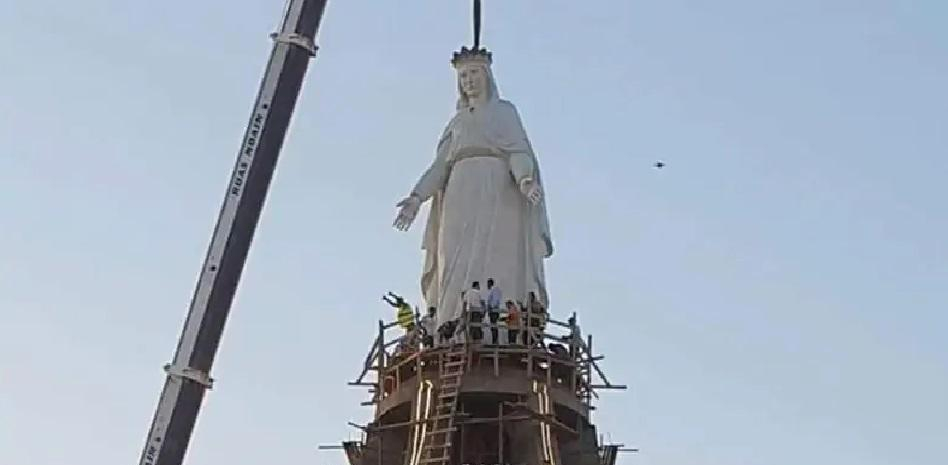(ZENIT News / Cairo, 08.23.2023).- In an emotional event that has captured the attention of locals and foreigners alike, Egyptian authorities have unveiled the latest artistic marvel gracing the landscape of the Asiut province. It is the imposing statue of the Virgin Mary, standing at a majestic nine meters in height, now rising as the largest bronze sculpture ever seen on Egyptian soil, crowning the Dronka church with an unprecedented magnificence.
The information was conveyed by the Pontifical Foundation Aid to the Church in Need (ACN Spain), which narrated the details of this artistic feat on its official web platform. The Dronka church, rich in history and devotion, now becomes the host of this masterpiece that transcends religion to capture the attention of all those who come across its imposing presence.
The origin of this colossal sculpture lies in the ambitious Egyptian Government initiative known as the ‘Holy Family Route.’ A project that encompasses over twenty sacred destinations, ranging from caves to churches, scattered across the Northern Sinai, Cairo, and the southern provinces of Minia and Asiut. It is in this latter corner that the figure of the Virgin Mary stands as a beacon of devotion and art, an essential stop on this spiritually meaningful route.
The inspiration behind this colossal work derives from the imposing statue of ‘Our Lady of Lebanon,’ which stands at a height of 8.5 meters in the picturesque Lebanese town of Harisa. The Egyptian statue, three meters wide, was sculpted in bronze by the skillful hands of the sculpture professor from the Faculty of Fine Arts at the University of Minia, Gerges Said al Gawli. A project that came to life over a year, during which the artist experimented with foam models until perfecting his final vision.
The sculptor shared with local media, through ACN, that the statue was cast in bronze and boasts an impressive weight of ten tons. This artistic and technical achievement was not devoid of challenges, as its colossal dimensions required construction in parts before being assembled at its final location. In this arduous process, both workers and Muslim workshops collaborated, uniting efforts in the creation of this monumental piece.
A distinctive detail stands out in the statue: its hollow structure. According to Al Gawli himself, this choice not only contributed to material savings but also facilitated the laborious tasks of assembly, transportation, and installation. The Virgin Mary, with her aura of grace and veneration, now stands as a symbol not only of faith but also of human ability to materialize the divine in tangible forms.
The inauguration of this sculpture marks a milestone in Egypt’s artistic and cultural heritage, a tribute to devotion and human effort that transcends religious and geographical barriers. The figure of the Virgin Mary, elevated above the Dronka church in all its bronze magnificence, becomes a testament to the creative ability and spiritual aspiration of the Egyptian people.



